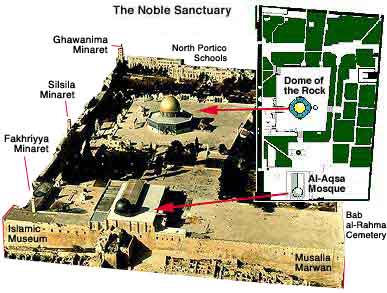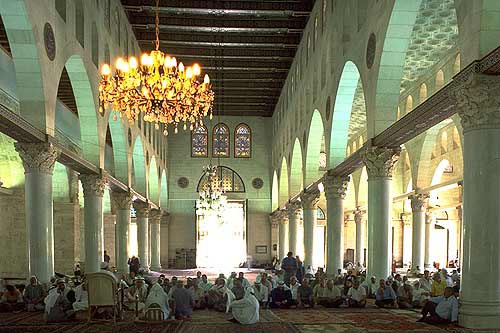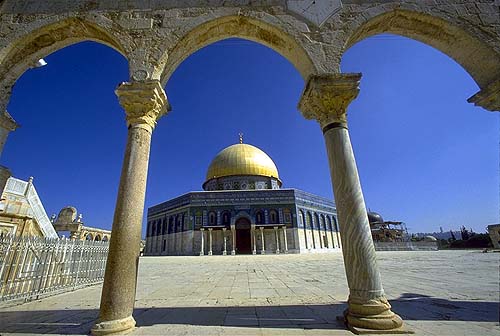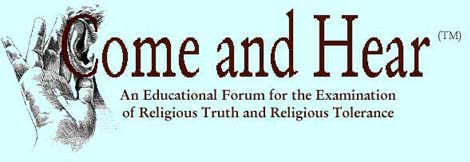
Blood Ritual | |||||||||||||||||||||||||||||||||||||||||||||||||
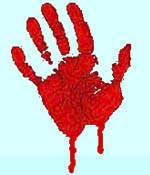 Blood Ritual: — Blood ritual is fundamental to Judaism. Some blood sanctifies, some blood defiles. Let's see what the Talmud doctrines are.

The Great He-Goat by Goya, 1821-1823 (22) 
Dome of the Rock
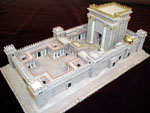
Rebuilding the Temple 
Rabbi Dr. Isidore Epstein, editor of the Soncino Talmud.  HE PINCHED OFF ITS HEAD CLOSE BY ITS NECK, BUT DID NOT SEVER IT, AND HE SPRINKLED ITS BLOOD ON THE WALL OF THE ALTAR; THE RESIDUE OF THE BLOOD WAS DRAINED OUT ON THE BASE. ONLY THE BLOOD BELONGED TO THE ALTAR, WHILE THE WHOLE OF IT BELONGED TO THE PRIESTS. — Zebahim 64b, prescribing sacrifice of birds. 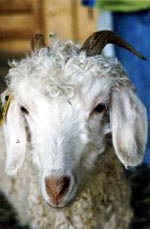
Sprinkling blood was the most important part of ritual. 
Jesus Threatens Sacrificial Cult 
You can help in the battle for Truth, Justice, and the American Way! Fight the forces of censorship and suppression of the Talmud, and bring about understanding between peoples of different faiths. 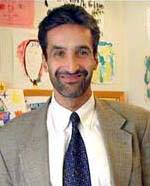
Samuel G. Freedman is "an award-winning writer and professor. A former reporter for The New York Times, he is the author of the four acclaimed books, most recently Jew vs. Jew: The Struggle for the Soul of American Jewry" — samuelfreedman.com (19) 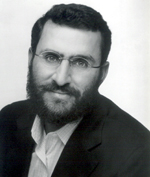
Rabbi Shmuley Boteach is a Kabbalist and author of Judaism for Everyone. Under the heading, "Contempt for Hunting and Divine Sports," Rabbi Boteach writes: "Hunting is anathema to a religion that will sanction the killing of an animal only for human survival and sustenance and finds it grotesque when used as a form of recreation. It was my Jewish upbringing that made me feel so repulsed when I first came to live in Great Britain and observed highly cultured civilized men and women taking obvious delight in shooting innocent animals." — Rabbi Boteach (13)  "Many Orthodox Jews and Fundamentalist Christians actively support the rebuilding of the Temple in Jerusalem. The Christians who agitate for this restoration do so because they believe it is God's will that sacrificial religion be restored. They see the resumption of Temple worship as a sure sign of the Second Coming of Christ. And those Jewish people who are anxious to see the resumption of Temple worship believe that ever since the destruction of the Jerusalem Temple, almost two thousand years ago, God has been awaiting the resumption of animal sacrifice … And among Jewish people, there are prescribed prayers for the restoration of sacrificial worship. 'Lord Our God, look with favor on Thy people Israel their prayer. Restore worship to Thy Temple in Zion and with loving grace accept Israel's offering and prayer.' The Traditional Prayer Book for Sabbath and Festivals" — Humane Religion (15) 
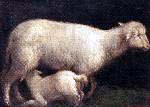
Sheep and Lamb by Bassano c. 1560 (18) 
Subordinate Nature 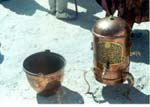
Temple Vessels for the future Temple of Jerusalem |
Many Americans associate the ritual killing of animals and the spattering and smearing of their blood with Satanism. But in fact ritual killing of animals and the spattering and smearing of their blood is a fundamental part of Judaism. MISHNAH. … The slaughtering of the bullock and the he-goat — Babylonian Talmud, Tractate Zebahim 47a Laws of ritual sacrifice are found in the Seder Kodashim. (23) In his Introduction to that Seder, Rabbi Dr. Isidore Epstein, editor of the Soncino Talmud, explains that in animal sacrifices, sprinkling blood was the most important part of the ritual. The sacrifices involved a series of acts of which the sprinkling of the blood was the most important in the case of animal sacrifices, and the burning of the handful (Komez) in the case of vegetable offerings. — Rabbi Dr. Epstein (1) Prayers to Revive Sacrificial CultRabbi Dr. Epstein points out that although ritual sacrifice has not been practiced since the destruction of the Second Temple (70 A.D.):
Dr. Epstein tells us why many Jews have taken a deep and personal interest in the Seder Kodashim. He calls the Jewish hope for the restoration of the Temple and the sacrificial cult "unquenchable." The Gemara on the 'Order' Kodashim is a testimony to the strong interest which the teachers of the Palestinian and Babylonian schools continued to take in the sacrificial cult even after its cessation with the destruction of the Temple. This interest was more than merely historical and academic. It was based on strictly practical considerations. There were in fact two motives that kept alive the study of the Seder Kodashim even after its laws had fallen into disuse. One sprang from the unquenchable hope that the Temple would sooner or later be rebuilt, involving the restoration of the sacrificial cult, so that the knowledge of its laws would once again become essential. The other was the belief that the study of the sacrificial laws could serve as a surrogate for the Temple cult and was no less efficacious than the actual offering of the sacrifice itself. These motives lay behind the unceasing intellectual activity that centered around the Seder Kodashim throughout the intervening centuries to the present day, and which has crystallized itself in a mass of commentaries on the 'Order'; and in our own times the conviction that has seized many minds that we are witnessing the Athhalta de-Geulah ('beginning of redemption') has led to the assiduous study of Seder Kodashim in many of the higher schools of learning in the Holy Land. — Rabbi Dr. Epstein (6) (emphasis added) Writing in 1948, Rabbi Dr. Epstein lamented the practical problems that stood in the way of the restoration of ritual sacrifice. The enormous legal difficulties involved in the restoration of sacrifices within our present social and political framework places the whole question outside the realm of practical halachah. — Rabbi Dr. Epstein (21) Now with the changing political situation in the Middle East, the barriers to the return of the sacrificial cult are rapidly being removed. Some observers predict that Israel may take complete control of the Temple Mount (site of the Muslim Al-Haram al-Sharif, the Noble Sanctuary), dismantle the Muslim shrines, and erect the Third Temple on the site. Some Israelis are presently preparing to rebuild the Temple according to the description in the Hebrew Scriptures (Old Testament). The Temple Institute is designing the altar where animals are to be slaughtered, constructing the priests' breastplates and sacred vessels, and attempting "to rekindle the flame of the Holy Temple in the hearts of mankind." (12) (Note: In the following Talmud excerpts, we often omit non-essential footnotes.) Killing the Animals and Sprinkling the BloodIt is time to turn to the Talmud. Several Tractates — the Tamid, Zebahim, and Middoth — provide us with a wealth of details on the sacrificial rites at the Second Temple two thousand years ago, rites that Jews so earnestly pray will be restored. Here is the full text of the excerpt from above: MISHNAH. WHICH IS THE PLACE [FOR THE RITES] OF SACRIFICES? THE SLAUGHTERING OF SACRIFICES OF THE HIGHER SANCTITY IS AT THE NORTH [SIDE OF THE ALTAR]. THE SLAUGHTERING OF THE BULLOCK AND THE HE-GOAT OF THE DAY OF ATONEMENT IS [DONE] AT THE NORTH, AND THE RECEPTION OF THEIR BLOOD IS [PERFORMED] WITH SERVICE VESSELS AT THE NORTH, AND THEIR BLOOD REQUIRES SPRINKLING BETWEEN THE STAVES [OF THE ARK], ON THE VEIL, AND ON THE GOLDEN ALTAR; [THE OMISSION OF] A SINGLE APPLICATION OF THESE INVALIDATES [THE CEREMONY]. THE RESIDUE OF THE BLOOD HE [THE PRIEST] POURED OUT ON THE WESTERN BASE OF THE OUTER ALTAR, BUT IF HE DID NOT POUR IT OUT, HE DID NOT INVALIDATE [THE SACRIFICE]. — Babylonian Talmud, Tractate Zebahim 47a He-Goats of New Moons Sacrificed in the NorthMISHNAH. PUBLIC AND PRIVATE SIN-OFFERINGS (THESE ARE THE PUBLIC SIN-OFFERINGS: THE HE-GOATS OF NEW MOONS AND FESTIVALS) ARE SLAUGHTERED IN THE NORTH, AND THEIR BLOOD IS RECEIVED IN A SERVICE VESSEL IN THE NORTH, AND THEIR BLOOD REQUIRES FOUR APPLICATIONS ON THE FOUR HORNS. — Babylonian Talmud, Tractate Zebahim 52b Slaughterer and Blood Sprinkler Chosen by LotThe priests cast lots to decide who will slaughter and who will sprinkle the blood. This Mishnah comes from Chapter III of the Tractate Tamid. It is lengthy, so we will discuss it in sections, and provide you with the full Mishnah in the Appendix: Mishnah of Tamid Chapter IV. MISHNAH. THE SUPERINTENDENT THEN SAID TO THEM: COME AND CAST LOTS, TO SEE WHO IS TO SLAUGHTER THE ANIMAL, AND WHO IS TO SPRINKLE THE BLOOD, AND WHO IS TO CLEAR THE ASHES FROM THE INNER ALTAR, AND WHO IS TO CLEAR THE ASH FROM THE CANDLESTICK, AND WHO IS TO LIFT THE LIMBS ON TO THE ASCENT, [NAMELY] THE HEAD, THE RIGHT LEG, THE BREAST AND THE NECK AND THE TWO FLANKS WITH THE ENTRAILS, ALSO THE FINE FLOUR AND THE GRIDDLE CAKES AND THE WINE. — Babylonian Talmud, Tractate Tamid 30a MISHNAH. … THE SLAUGHTERER DID NOT KILL UNTIL HE HEARD THE SOUND OF THE GREAT GATE BEING OPENED. — Babylonian Talmud, Tractate Tamid 30b Sacrifice Is TrussedMISHNAH. THEY DID NOT USE TO TIE UP THE LAMB BUT THEY STRUNG ITS LEGS TOGETHER. THOSE ON WHOM THE LOT FELL FOR THE LIMBS TOOK HOLD OF IT. IT WAS STRUNG UP IN SUCH A WAY THAT ITS HEAD WAS TO THE SOUTH WHILE ITS FACE WAS TURNED TO THE WEST, AND THE SLAUGHTERER STOOD TO THE EAST OF IT WITH HIS FACE TURNED TO THE WEST. — Babylonian Talmud, Tractate Tamid 30b Killing on Correct Side of AltarMISHNAH. … THE MORNING SACRIFICE WAS KILLED BY THE NORTH-WESTERN CORNER OF THE ALTAR AT THE SECOND RING, WHILE THE EVENING SACRIFICE WAS KILLED BY THE NORTH-EASTERN CORNER AT THE SECOND RING. — Babylonian Talmud, Tractate Tamid 30b Casting Blood on Correct Side of AltarMISHNAH. … WHILE ONE SLAUGHTERED ANOTHER RECEIVED THE BLOOD. THE LATTER PROCEED TO THE NORTH-EASTERN CORNER AND CAST THE BLOOD ON THE EASTERN AND NORTHERN SIDES; HE THEN PROCEEDED TO THE SOUTH-WESTERN CORNER AND CAST THE BLOOD ON THE WESTERN AND SOUTHERN SIDES. THE REMNANT OF BLOOD HE POURED OUT AT THE SOUTHERN BASE OF THE ALTAR. — Babylonian Talmud, Tractate Tamid 30b Ritual DismembermentMISHNAH. … HE DID NOT USE TO BREAK THE LEG, BUT HE MADE A HOLE IN IT AT THE JOINT AND SUSPENDED IT FROM THERE. HE THEN BEGAN TO FLAY IT AND WENT ON UNTIL HE CAME TO THE BREAST. WHEN HE CAME TO THE BREAST HE CUT OFF THE HEAD AND GAVE IT TO THE ONE TO WHOSE LOT IT HAD FALLEN. HE THEN CUT OFF THE LEGS AND GAVE THEM TO THE ONE TO WHOSE LOT THEY HAD FALLEN. — Babylonian Talmud, Tractate Tamid 31a Blood Wrung from HeartMISHNAH. … ON COMPLETING THE FLAYING HE TORE OUT THE HEART AND SQUEEZED OUT THE BLOOD IN IT. — Babylonian Talmud, Tractate Tamid 31a Priests Assigned Body PartsThe Mishnah goes on to state that the forelegs, the right leg and the two testicles, etc., are each given to the priest who, by the drawing of lots, had been assigned those body parts. The slaughterer then tore open the carcass so that it was all exposed before him. He put the fat on top of the place where the head had been severed. (Tamid 31a.) The Mishnah continues: MISHNAH. … HE TOOK THE INWARDS AND GAVE THEM TO THE ONE WHOSE LOT THEY HAD FALLEN TO WASH THEM. THE STOMACH WAS WASHED VERY THOROUGHLY IN THE WASHING CHAMBER, WHILE THE ENTRAILS WERE WASHED AT LEAST THREE TIMES ON MARBLE TABLES WHICH STOOD BETWEEN THE PILLARS. HE THEN TOOK A KNIFE AND SEPARATED THE LUNG FROM THE LIVER AND THE FINGER OF THE LIVER FROM THE LIVER, BUT WITHOUT REMOVING IT FROM ITS PLACE. — Babylonian Talmud, Tractate Tamid 31a The Mishnah goes on to describe the carving of the entire animal, the breast, the flanks, the spine, neck, ribs, tail, kidneys, etc. and the distribution of the body parts to the correct priests. MISHNAH. … HE HOLLOWED OUT THE BREAST AND GAVE IT TO THE ONE TO WHOSE LOT IT HAD FALLEN. HE CAME TO THE RIGHT FLANK AND CUT INTO IT AS FAR AS THE SPINE, WITHOUT HOWEVER TOUCHING THE SPINE, UNTIL HE CAME TO THE PLACE BETWEEN TWO SMALL RIBS. HE CUT IT OFF AND GAVE IT TO THE ONE TO WHOSE LOT IT HAD FALLEN, WITH THE LIVER ATTACHED TO IT. HE THEN CAME TO THE NECK, AND LEAVING TWO RIBS ON EACH SIDE OF IT HE CUT IT OFF AND GAVE IT TO THE ONE TO WHOSE LOT IT HAD FALLEN, WITH THE WINDPIPE AND THE HEART AND THE LUNG ATTACHED TO IT. — Babylonian Talmud, Tractate Tamid 31a And so the Mishnah continues, describing the distribution of all the organs, limbs, and other body parts. Priests All Standing with Limbs in Their Hands
MISHNAH. … BY THIS TIME THEY WERE ALL STANDING IN A ROW WITH THE LIMBS IN THEIR HANDS. THE FIRST HAD THE HEAD AND THE [RIGHT] HIND LEG. THE HEAD WAS IN HIS RIGHT HAND WITH ITS NOSE TOWARDS HIS ARM, ITS HORNS BETWEEN HIS FINGERS, AND THE PLACE WHERE IT WAS SEVERED TURNED UPWARDS WITH THE FAT COVERING IT. THE RIGHT LEG WAS IN HIS LEFT HAND WITH THE PLACE WHERE THE FLAYING COMMENCED AWAY FROM HIM. — Babylonian Talmud, Tractate Tamid 31a, 31b
MISHNAH. … THE SEVENTH HAD THE FINE FLOUR, THE EIGHT THE GRIDDLE CAKES, THE NINTH THE WINE. THEY WENT AND PLACED THEM ON THE LOWER HALF OF THE ASCENT ON ITS WESTERN SIDE, AND SALTED THEM AND CAME DOWN AND WENT TO THE CHAMBER OF HEWN STONE TO RECITE THE SHEMA. — Babylonian Talmud, Tractate Tamid 31b After the slaughtering, blood sprinkling, and separation of limbs and organs, the priests leave the body parts on the side of the altar and retire to another chamber to recite the Shema, a Jewish prayer (see Soncino Talmud Glossary). Sprinkling the Blood of BirdsIn a sin-offering, the slaughter of birds and smearing their blood is prescribed thus: MISHNAH. HOW WAS THE SIN-OFFERING OF A BIRD SACRIFICED? HE PINCHED OFF ITS HEAD CLOSE BY ITS NECK, BUT DID NOT SEVER IT, AND HE SPRINKLED ITS BLOOD ON THE WALL OF THE ALTAR; THE RESIDUE OF THE BLOOD WAS DRAINED OUT ON THE BASE. ONLY THE BLOOD BELONGED TO THE ALTAR, WHILE THE WHOLE OF IT BELONGED TO THE PRIESTS. — Babylonian Talmud, Tractate Zebahim 64b Certain Fingers Used To Smear BloodThe following Gemara discusses some of the fine points: GEMARA. … How was the blood of the public and the private sin-offerings applied? He went up the ascent, turned to the surrounding balcony, and passed on to the south-east horn, where he dipped his right finger — i.e., the index finger of his right hand — into the blood in the bowl, and supported it with his thumb on this side and his little finger on the other, and applied it with a downward movement against the edge of the horn until all the blood on his finger was gone, and thus [he did] at every horn? — This is what he means: Its regulation is [that it be applied] at the edge; yet if he applies it within a cubit in either direction, we have no objection … — — Babylonian Talmud, Tractate Zebahim 53a Washing Blood from the HandsWhen a priest's hands become bloody, the need for washing may or may not be dependent upon whether the blood spurted on his hands before after he flayed, or before or after he sprinkled. The rabbis discuss the issue. (Ellipsis in second paragraph is present in original Soncino text.) GEMARA. … Rabin son of R. Adda said to Raba: Your disciple said in R. Amram's name: It was taught: If [the priest] was sprinkling, and [the blood of] the sprinkling spurted out of his hand, [and this happened] before he had sprinkled, it needs washing; after he had sprinkled, it does not need washing. Surely this is what he means: [If it happened] before he finished sprinkling, it needs washing; after he finished sprinkling, it does not need washing. — No: this is what he means: before the sprinkling had left his hand, it necessitates washing; after it had gone forth from his hand, it does not need washing. — Babylonian Talmud, Tractate Zebahim 93b Blood Drained Into BrookTractate Middoth of the Seder Kodashim provides a description of the Second Temple. Chapter III, Mishnah 2 provides us with this detail of the direction of the flow of blood, and bears witness to the quantity of blood that issues forth from Temple sacrifices: MISHNAH 2. AT THE SOUTH-WESTERN CORNER [OF THE FOUNDATION] THERE WERE TWO OPENINGS LIKE TWO FINE NOSTRILS THROUGH WHICH THE BLOOD WHICH WAS POURED ON THE WESTERN SIDE OF THE FOUNDATION AND THE SOUTHERN SIDE FLOWED DOWN TILL THE TWO STREAMS BECAME MINGLED IN THE CHANNEL, THROUGH WHICH THEY MADE THEIR WAY OUT TO THE BROOK OF KIDRON. — Babylonian Talmud, Tractate Middoth, Chapter III, Mishnah 2 Notice that, according to the above Mishnah, there was so much bloody run-off that two "nostrils" were built into the Temple and blood flowed through them and into a brook. Rabbi Dr. Epstein confirms the frequency of these sacrifices. There were obligatory sacrifices, and there were voluntary sacrifices. There were collective sacrifices brought in the name of the entire community: the early morning and afternoon sacrifices, and the additional sacrifices on Sabbaths, New Moons, Festivals, and the Day of Atonement; and there were besides individual sacrifices. Some sacrifices were honorific in character and were offered in worship or as an expression of homage to God; others were piacular and were brought in expiation of sin; others again were tributary and presented in recognition of God as bestower of the gifts of Nature. To the honorific belong the peace-offering (shelem, plur. shelamim), the thank-offering (todah), and the burnt-offering ('olah). The sin-offering (hattath) and guilt-offering (asham) belong to the piacular; and included in the tributary are the firstlings (bekoroth) and the cattle tithes (ma'aser behemah). — Rabbi Dr. Epstein (2) Wealth Displayed in Sacrificial ChamberFrom the Mishnah of Tamid 30a-30b, we learn that ninety-three (93) vessels of silver and gold are brought into the sacrifice chamber. These are the vessels in which the blood of the sacrifices is collected. This passage further describes the signs of great wealth on display. GEMARA. … There were thirteen tables in the Temple. There were eight of marble in the slaughter house on which they used to wash the inwards; two to the west of the ascent, one of marble and one of silver — on the marble one they used to put the limbs and on the silver one vessels of service, two in the Porch on the inner side by the door of the Sanctuary, one of silver and one of gold — on the silver one they used to place the Shewbread when it was first brought in, and on the gold one when it was taken out, because with holy things we always go a step higher and not a step lower; and one of gold in the inner place on which the Shewbread always rested. Now let us see. There must be no sign of poverty in the abode of wealth. (2) Why then was the table made of marble? It should have been made of silver or even gold! R. Hinnena answered in the name of R. Assi, and R. Assi in the name of R. Samuel b. R. Isaac: Because [the metal] would heat the flesh. — Babylonian Talmud, Tractate Tamid 31b Note these words in the above passage. GEMARA. … There must be no sign of poverty in the abode of wealth. (2) — Babylonian Talmud, Tractate Tamid 31b Soncino Tamid translator Maurice Simon amplifies the text in a footnote:
— Maurice Simon (4) Sacrificial Cult and Jesus of NazarethIn John 2, we learn that the Second Temple was the scene of a lucrative business, set up to sell animals and birds for ritual slaughter. Jesus of Nazareth condemned this practice; at one time he tipped over tables and drove out the shop keepers and animals with a scourge.
— John 2:13-16 (KJV) For further discussion of this incident, see Was Jesus a Jew? (31) Ritual Sacrifice Designed to Perfect MankindEllipsis indicates text omitted by Come and Hear™. The grave view which the Bible takes of ritual sins is bound up with the significance of the ritual law. It is almost a truism that the ritual law of the Torah has for its purpose the religious and moral perfection of man. Have not the sages of the Talmud already declared that the precepts have been given only to ennoble mankind? … Thus conceived, the ritual law is charged with a moral and religious dynamism capable of transforming the individual and, through the individual, the society of which he forms a unit. The disregard of a ritual precept is accordingly no longer a private affair; in so far as it lowers man's moral fibre and his power of resistance to evil, every ritual offence is in a sense a social offence. — Rabbi Dr. Epstein (8) Human Perfection Comes through IsraelThus do the grim and tragic experiences of our time only serve to confirm the attitude of traditional Judaism to the ritual law as an indispensable aid to moral law; and the restoration of the obligatory offerings in the days to come can only serve to strengthen and safeguard the ritual law for the regeneration and perfection of Israel and, through Israel, of the whole of humanity. — Rabbi Dr. Epstein (7) Obligatory Sacrifices Are StatutoryRabbi Dr. Epstein states that ritual law transforms a society; therefore, to disregard a ritual precept is to commit an offense against society. Thus conceived, the ritual law is charged with a moral and religious dynamism capable of transforming the individual and, through the individual, the society of which he forms a unit. The disregard of a ritual precept is accordingly no longer a private affair; in so far as it lowers man's moral fibre and his power of resistance to evil, every ritual offence is in a sense a social offence. — Rabbi Dr. Epstein (8) What Lies Ahead?As we have already noted, in 1948, Rabbi Epstein saw grave practical difficulties in the restoration of the sacrificial cult. Those barriers are now dissolving. As we go to press, plans are well underway to build the Third Temple in Israel. The Temple Institute describes its work: The major focus of the Institute is its efforts towards the beginning of the actual rebuilding of the Holy Temple. Towards this end, the Institute has begun to restore and construct the sacred vessels for the service of the Holy Temple. These vessels, which G-d commanded Israel to create, can be seen today at our headquarters in Jerusalem. They are made according to the exact specifications of the Bible, and have been constructed from the original source materials, such as gold, copper, silver and wood. These are authentic, accurate vessels, not merely replicas or models. All of these items are fit and ready for use in the service of the Holy Temple. Among the many items featured in the exhibition are musical instruments played by the Levitical choir, the golden crown of the High Priest, and gold and silver vessels used in the incense and sacrificial services. After many years of effort and toil, the Institute has just recently completed the three most important and central vessels of the Divine service: the seven-branched candelabra, or Menorah, made of pure gold; the golden Incense Altar, and the golden Table of the Showbread. — The Temple Institute (12) The late Rabbi Moshe Tzvi Segal, a Chabad Lubavitcher and a former member of the Irgun High Command and the Stern Group, was one of the initiators of the Temple Institute. (27) Rabbi Segal explains the importance of the Temple Mount: The mount on which the Temple stood, Mount Moriah, "The Temple Mount," is the source of our willingness to sacrifice, to give of ourselves for our people and G-d. This mesirut nefesh, dedication and self-sacrifice, has its foundation on this Mountain. Abraham was willing to sacrifice - the Bible even states that he rose early that morning, hurrying to fulfill G-d's will — Abraham was willing to sacrifice and offer his only son to G-d. From this we have drawn our strength and ability, from this the Jews today in the Soviet Union draw the strength to endure their suffering. — Rabbi Moshe Tzvi Segal (28) This point is neither studied nor taught today, that we can restore our sovereignty only by having the Temple Mount in our hands. Sovereignty over the Land of Israel is impossible while the Temple Mount is in the hands of a (any) foreign religion. The Temple Mount must be in the hands of a Sovereign Kingdom of Israel, to give expression to G-d's sovereignty over Israel. This is brought out all through the Bible, all through our literature and thought. — Rabbi Moshe Tzvi Segal (29) A reader visiting the Temple Institute site will be impressed by the Institute's plans. Those plans are not merely theoretical — they are concrete and immediate: "Our short-term goal is to rekindle the flame of the Holy Temple in the hearts of mankind. Our long-term goal is to do as much as possible to bring about the building of the Holy Temple in our time." This effort is obviously very well funded, on the order of a government project, well beyond what a private foundation could manage. Notice in that description, the years of effort spent on the construction of solid gold vessels for the temple service. Other pages describe gold and silver woven into cloth for the priestly vestments and crowns. According to the Chancellor of the Jewish Theological Seminary of America, Ismar Schorsch, Orthodox institutions in Israel are heavily dependent on government money. A considerable sum of US taxpayer money is given to Israel each year. That means the US taxpayer is arguably subsidizing the Israeli effort to reconstruct the Temple, cast the solid gold altar accessories, and to spread Orthodox Judaism through the world. Information concerning the Noble Sanctuary from www.noblesanctuary.com
Slated for Relocation?
Postscript: Jesus struck at the heart of the animal sacrifice system, and before the end of the week, He was crucified. The Temple incident was not His only attack on rabbinical and Mosaic law. In a number of passages, Jesus shows clearly He does not support the church of his day. See Was Jesus a Jew? (http://www.come-and-hear.com/editor/jesus.html)
NEXT: Blood Ritual 3: Human Sacrifice, the Talmud, and The Moloch Problem
Endnotes:
Appendix: Mishnah of Tamid Chapter IVThis Mishnah begins in Tractate Tamid 30b and extends into Tractate Tamid 31b.
— Babylonian Talmud, Tractate Tamid 30b-31b | ||||||||||||||||||||||||||||||||||||||||||||||||
Footnotes:
Full specifics for each of the printed sources are provided in the Bibliography Outside URLs were valid at the time this article was written. However, be mindful that URLs do change.
- Babylonian Talmud, "Introduction," Seder Kodashim, Vol. I, page xxi available at http://www.come-and-hear.com/talmud/kodashim.html#xxi
- Ibid, page xx available at http://www.come-and-hear.com/talmud/kodashim.html#xx
- Judaism for Everyone, page 18
- Babylonian Talmud, Tractate Tamid 31b, page 26, footnote 2
- Jew vs. Jew, page 338
- Babylonian Talmud, Seder Kodashim, Vol. I, pages xix, xx available at http://www.come-and-hear.com/talmud/kodashim.html#xix
- Ibid, pages xxxii available at http://www.come-and-hear.com/talmud/kodashim.html#xxii
- Ibid, page xxiii available at http://www.come-and-hear.com/talmud/kodashim.html#xxiii
- Ibid, page xxix available at http://www.come-and-hear.com/talmud/kodashim.html#xxix
- Ibid, page xxxii, note 4 available as note 40, http://www.come-and-hear.com/talmud/kodashim.html#n_40
- Ibid, page xvii available at http://www.come-and-hear.com/talmud/kodashim.html#xvii
- "About the Temple Institute", The Temple Institute: at http://www.templeinstitute.org cached at http://www.come-and-hear.com/editor/br-tmpl-inst
- Judaism for Everyone, pages 304-305
- "Topic: The Tenth of Teves — The Power of Prayer and the Destruction," YomTov, Vol. I, # 64: http://www.torah.org/learning/yomtov/asarabteves/vol1no64.html
- "Animal Sacrifice," Humane Religion, July/Aug 1998: http://www.all-creatures.org/hr/hrasacrific.htm
- "J. Smiley's Bar Mitzvah Divrei Torah," Beth Sholom Temple, 18 March 2000: http://www.uahc.org/congs/va/va001/Beth%20Sholom%20Temple%20New/Youth/Smiley.html
- The Torah Answers, Rabbi Abraham M. Hassan, 1984, pp. 91 quoted at http://www.ny-bridge.com/judaism/lesson24.html
- Sheep and Lamb by Rome Jacopo Bassano, c. 1560; Oil on canvas; Galleria Borghese
- Web home of writer Samuel G. Freedman, http://www.samuelfreedman.com
- "Future Events of The Temple Mount Faithful," The Temple Mount and Land of Israel Faithful Movement http://www.templemountfaithful.org/Newsletters/2001/5761-17.htm
- Babylonian Talmud, "Introduction," Seder Kodashim, Vol. I, page xxxii, footnote 4, available in Come and Hear™ hypertext as footnote 40, http://www.come-and-hear.com/talmud/kodashim.html#xxxii
- The Great He-Goat, Francisco Goya, 1821-1823. Oil on plaster remounted on canvas, Museo del Prado, Madrid.
- Seder Kodashim is not on line at Come and Hear™. Soncino editor Rabbi Dr. Isidore Epstein's Introduction to the Seder Kodashim is available at http://www.come-and-hear.com/talmud/kodashim.html
- br-tmfaithful-obj br-tmfaithful-vision
- "Rebuilding the Temple and the Stages of Jewish History," Save Israel, http://www.saveisrael.com/segal/segalhistory.htm cached at http://www.come-and-hear.com/editor/br-segal-hist
- "Haggai also prophesied that all the nations would bring their treasures to the temple. That event has not been fulfilled. It awaits yet another temple when Christ returns to rule the earth from Zion." from "March 12, 515 BC - Back from Captivity, Jews Complete New Temple," Christian History Institute http://www.gospelcom.net/chi/DAILYF/2002/03/daily-03-12-2002.shtml cached at http://www.come-and-hear.com/editor/br-christian
- "Rav Moshe Tzvi Segal: a biography," Save Israel, http://www.saveisrael.com/segal/segalbio.htm cached at http://www.come-and-hear.com/editor/br-segal-bio
- "Rebuilding the Temple and the Stages of Jewish History," by Moshe Tsvi Segal, Save Israel, http://www.saveisrael.com/segal/segalhistory.htm cached at http://www.come-and-hear.com/editor/br-segal-hist
- " What is Judaism Without the Temple Mount? by Moshe Tsvi Segal," by Moshe Tsvi Segal, Save Israel, http://www.saveisrael.com/segal/segalmount.htm cached at http://www.come-and-hear.com/editor/br-segal-tm
- Judaism for Everyone, page 301
- Was Jesus a Jew? is available at http://www.come-and-hear.com/editor/jesus.html
© Copyright Carol A. Valentine, 2003. See copyright statement at http://www.come-and-hear.com/copyright.html
NEXT: Blood Ritual 3: Human Sacrifice, the Talmud, and the Moloch Problem
Navigate This Site

Home Valentine Dilling Talmud The Rabbis Supplement Glossary Download Admin
 Interior, Dome of the Rock
Interior, Dome of the Rock Genuine Come and Hear™ CDs do not contain executable programs. When making CDs, do not include any files that end in .exe, .com, .bat, .vbs, .doc, .pif, .sit, or .scr. The person receiving the CD should use his own browser to view the files. This helps to protect him from harmful programs and viruses.
Genuine Come and Hear™ CDs do not contain executable programs. When making CDs, do not include any files that end in .exe, .com, .bat, .vbs, .doc, .pif, .sit, or .scr. The person receiving the CD should use his own browser to view the files. This helps to protect him from harmful programs and viruses. 